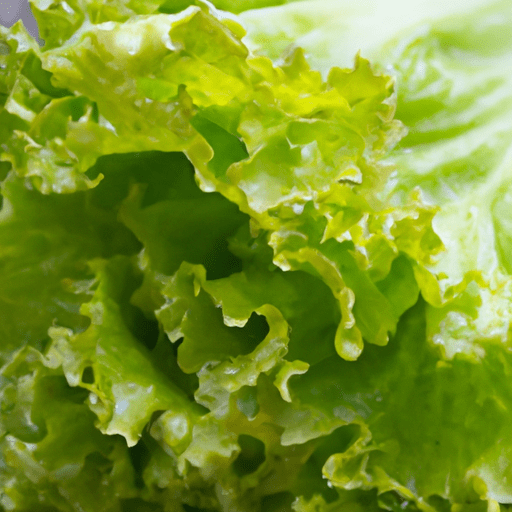The Wonder of Lettuce: A Versatile and Nutritious Delight
When it comes to leafy greens, one cannot overlook the humble lettuce. While often seen as a supporting ingredient, lettuce has a unique taste and a storied past that make it a worthy subject of culinary exploration. From fresh salads to hearty wraps, this versatile vegetable offers a world of possibilities in the kitchen. In this post, we dive into the vibrant world of lettuce, exploring its taste, common uses, nutritional value, and fascinating facts that will leave you appreciating this leafy delight in a whole new light.
Taste Sensations
Lettuce boasts a mild and refreshing flavor profile, making it a popular choice for many dishes. Its gentle bitterness is complemented by a subtle sweetness, culminating in a crisp and succulent mouthfeel. The taste can vary depending on the variety—some types, like butter lettuce, have a milder and almost buttery flavor, while others, such as romaine, offer a slightly more robust and earthy taste. Regardless of the type, lettuce lends a pleasant, cooling sensation to any dish it graces.
Versatile Uses in Cooking
Lettuce’s versatility knows no bounds in the culinary world. Its crisp texture and mild flavor make it an ideal base for salads of all kinds. Whether you prefer a classic Caesar salad with crunchy romaine leaves or a colorful summer salad featuring a mix of vibrant lettuce varieties, this leafy green adds depth and freshness to any bowl.
But lettuce’s potential doesn’t end with salads. It can take center stage as a filling in wraps and sandwiches, where it offers a delightful crunch and a refreshing contrast to other ingredients. Lettuce wraps, popular in Asian cuisine, provide a healthy yet satisfying alternative to traditional wraps. The sturdy leaves of lettuce serve as a delightful vessel for holding countless fillings like grilled chicken, tofu, or even shrimp.
Nutritional Powerhouse
Beyond its culinary merits, lettuce packs quite a nutritional punch. While low in calories, it offers an array of essential nutrients. Lettuce is an excellent source of vitamin K, an essential nutrient for blood clotting and bone health. Additionally, it offers vitamin A, vitamin C, folate, and minerals like potassium and manganese. This combination of vitamins and minerals supports overall well-being and strengthens the immune system.
Furthermore, lettuce’s high water content contributes to hydration and aids digestion. Its fiber content promotes a healthy gut and helps maintain a feeling of fullness, making it a valuable addition to weight management plans.
Fun Facts and History
Did you know that lettuce has an extensive history? Its origins can be traced back to ancient Egypt, where it was highly valued for its impressive medicinal properties. Egyptian kings and queens were particularly fond of lettuce for its supposed sleep-inducing properties.
Lettuce’s popularity continued to grow, with ancient Greeks and Romans incorporating it into their cuisine. They believed that it could cool the body and calm heated passions. The Romans, in particular, viewed lettuce as an aphrodisiac and strategically placed it on dining tables during their infamous feasts.
Today, lettuce is widely cultivated in different parts of the world, with countless varieties to explore. Ranging from the crisp and delicate Boston lettuce to the robust and nutrient-rich kale, lettuce continues to evolve as culinary enthusiasts experiment with new flavors and textures.
In conclusion, lettuce is an invaluable ingredient in the culinary world, offering a subtle taste, versatility in cooking, and impressive nutritional benefits. Whether gracing a salad bowl or nestling ingredients in a wrap, lettuce’s mild yet refreshing presence brings balance and texture to a wide range of dishes. So, next time you reach for this unassuming leafy green, remember its rich history and the wonders it can work in your kitchen.
Experience the crispness, embrace the versatility, and savor the wonders of lettuce!
Lettuce
Origin and History: Lettuce (Lactuca sativa) is believed to have originated in ancient Egypt over 4,500 years ago. It was considered a sacred plant by the ancient Egyptians and was often depicted in their wall paintings. From Egypt, lettuce spread to Greece and Rome, and it was eventually introduced to other parts of Europe.
Common Uses: Lettuce is primarily used in salads, sandwiches, and wraps. Its mild flavor and refreshing crispness make it a popular addition to various dishes. It can also be grilled, braised, or used as a bed for other cooked dishes.
Nutritional Benefits: Lettuce is low in calories and contains several important nutrients. It is a good source of dietary fiber, which aids in digestion. Lettuce is also rich in vitamins A and K, providing important antioxidants and supporting healthy vision and blood clotting. Additionally, it contains smaller amounts of vitamin C, folate, iron, and potassium.
Varieties: There are several different varieties of lettuce, including iceberg, romaine, butterhead (such as Bibb or Boston), and leaf lettuces. Each variety has its own unique texture, flavor, and appearance.
Unique Properties: Lettuce contains high water content, which contributes to its crisp and hydrating nature. It can be a useful source of hydration, especially during hot weather. Additionally, lettuce leaves are often used as wraps to replace tortillas or bread, offering a lighter and gluten-free alternative.
Cultivation: Lettuce can be grown in a variety of climates, as long as the temperatures don’t become too extreme. It prefers cooler temperatures and grows well in spring and autumn. There are different methods of cultivation, such as field-grown, hydroponic, or greenhouse production.




Use the share button below if you liked it.
It makes me smile, when I see it.